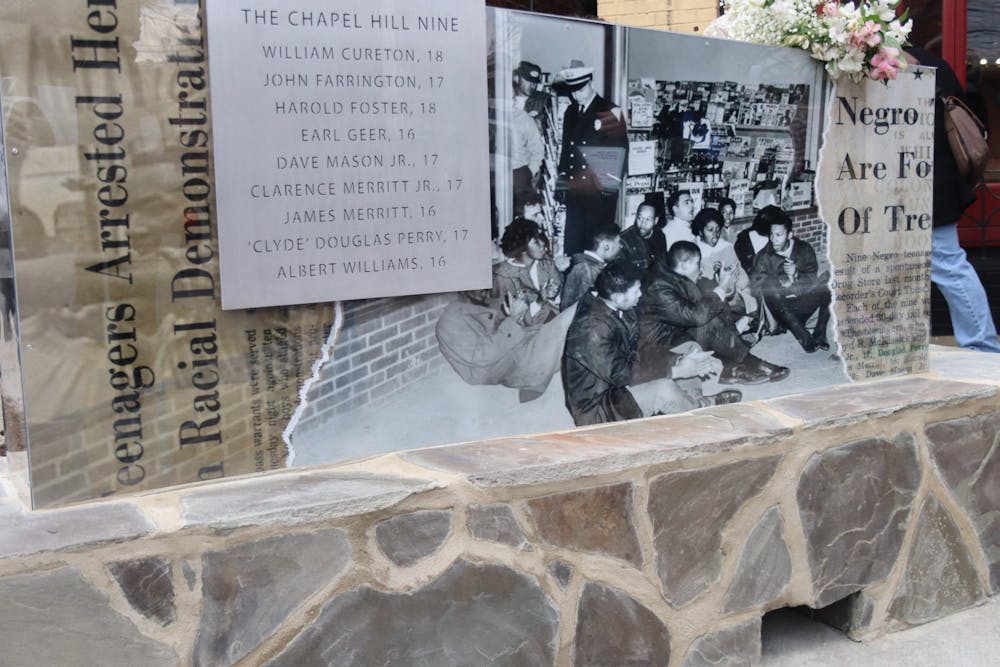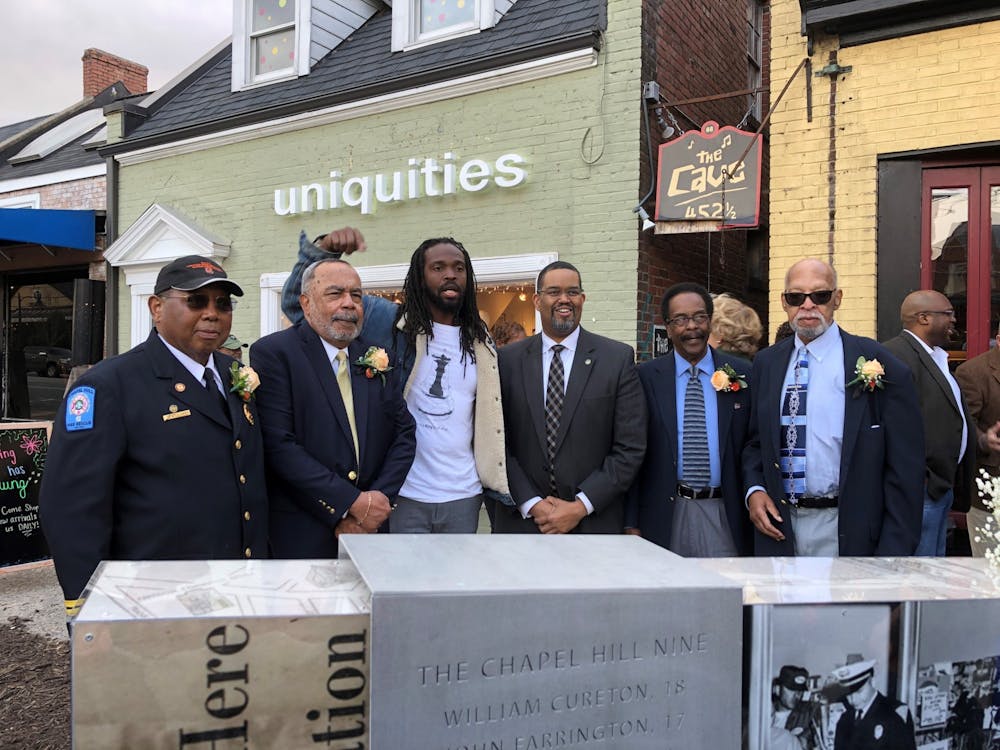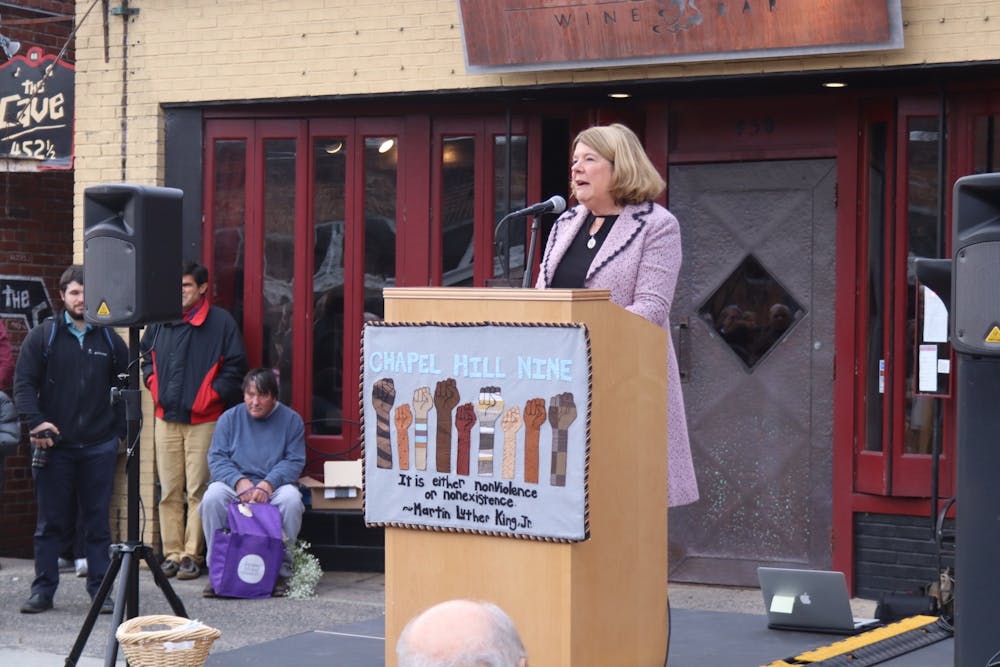A group of Black high school students set off a decade of civil rights demonstrations in Chapel Hill when they sat down in a booth at Colonial Drug Store on Franklin Street on Feb. 28, 1960 and asked to be served.
William Cureton, John Farrington, Harold Foster, Earl Geer, Dave Mason Jr., Clarence Merritt Jr., James Merritt, ‘Clyde’ Douglas Perry and Albert Williams were the young men who became known as the Chapel Hill Nine. 60 years later, the four surviving members of the group attended Friday’s unveiling ceremony of the marker that commemorates their actions during the Civil Rights Movement.
The marker sits at 450 W. Franklin St., which was the location of the Colonial Drug Store. The creation of the marker was the result of work done by the Historical Civil Rights Commemoration Task Force, which Chapel Hill Mayor Pam Hemminger formed in 2017 to document the Civil Rights Movement in Chapel Hill.
“We decided we would like to honor brave events and things that help shape us to being a better community,” Hemminger said.
The marker, which was designed by Durham artist Stephen Hayes, has images of the protests and police officers outside of the drugstore, as well as images of news headlines from the time. On both sides of the marker, the names and ages of the Chapel Hill Nine at the time of the sit-in are displayed. According to the Town of Chapel Hill website, the marker was designed to be a fusion of public art and a historical monument.

The 1960 sit-in was inspired by the protest at Woolworth’s lunch counter in Greensboro earlier that month. Esphur Foster, sister of Chapel Hill Nine member Harold Foster, spoke at the ceremony and paid homage to the courage the Chapel Hill Nine had as young students.
“When you are 80, as I am now, you realize that actually they were just babies,” she said. “16, 17 and 18 years of age. On Feb. 18, 1960, these babies had the audacity — or as Black folks like to say the nerve — to address a societal norm that had begun for us, the African Americans, in 1619.”
Albert Williams, one of the Chapel Hill Nine and Chapel Hill’s first Black firefighter, said the group’s leader was Harold Foster and likened him to a "hot spark plug." He said the younger students listened to the older students in the group, and they respected each other.





